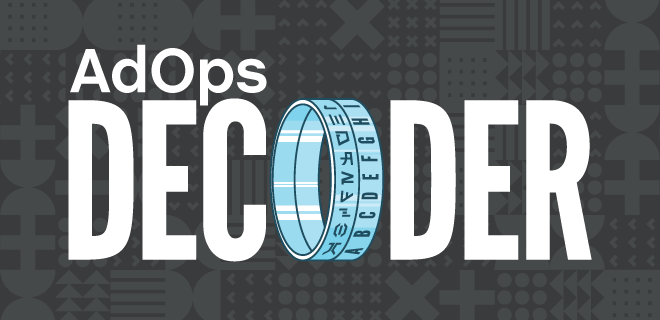
Privacy and business concerns have been a controversial topic since the industry started using identifiers to track and measure audiences and the conversation keeps heating up as we approach the death of third-party cookies.
While there are pros to cross-site tracking, the heftiest con that comes with all of this user data flying around aimlessly on the internet is the fact that personal data is exposed without transparent consumer oversight or control over how their personal data is being collected and processed for advertising purposes.
We are all tired of third-party cookie notifications popping up anytime we stop by a webpage, and it appears there just might be a solution to retain accessibility in a cookieless universe.
Publishers have longed for a privacy-safe way to make their own data and site traffic translatable programmatically across many sites and sellers. With less than a year to go until the demise of third-party cookies in Chrome, there seems to be a new kid on the block who will serve the same purpose in a less intrusive way.
What Is Seller Defined Audiences?
Project Rearc, created by the IAB Tech Lab, has spent the past two years carrying their firstborn, whom we now know as seller-defined audiences (SDA). The solution presents a strategy for communicating first-party audience information without disclosing user identity.
The Tech Lab made a commitment to address consumer demands for personalization and privacy, and they have successfully fulfilled Rearc’s goals of creating new standards of behavior, codes of conduct, and enabling technologies to bring forth a new solution to privacy woes.
This approach intends to:
- Support scalable, privacy-centric monetization of open web content and services while reducing disruption to business activities and supply chain behavior.
- Improve existing open standards like IAB Tech Lab’s Content and Audience taxonomies, the OpenRTB specification, and the Data Transparency Standard to ensure a dynamic and competitive open ecosystem while also incentivizing clear and accountable data access and use that’s in line with regional privacy expectations.
The SDA approach intends to address marketer and publisher concerns as they pertain to audience addressability, as well as privacy and security concerns of sharing data with unauthorized recipients, and it will put publishers in a position to sell over 1,600 versions of contextual audiences to advertisers and “standardize these audiences for buying facilitation across multiple publishers.”
Why use Seller Defined Audiences?
When Publishers go the SDA route they can activate first-party data for buyers without user identifier data being shared with external platforms.
Usually, if a publisher wanted to activate first-party audience data and allow advertisers to buy against it, they would have two options:
- Push the data from a DMP to a DSP and make it available for buyers.
- Push the data from a DMP to an SSP and create a private marketplace deal (PMP) segmented by audience attributes
Either route requires a publisher to share user data and segment metadata with another platform. Let’s try the analogy of a fish swimming in a lake without sharks compared to the ocean with deadly sharks. The third-party cookie is the fish who initially swam in a lake that he knows is safe and free of sharks (publisher database), but when he decides to swim out into the Pacific (an external database,) he will probably get eaten by a shark.
Once the user identifier moves onto an external database, the publisher no longer has control of the data, meaning they cannot guarantee the protection of user data.
The seller-defined audience approach highlights the potential to enhance user privacy and secure the business value of first-party media.
Are Pubs Ready to Try Seller Defined Audiences?
While many publishers are thrilled about the SDA concept, some are far from convinced, as noted in a recent AdExchanger article.
Stephanie Layser, News Corp’s VP of Data, Identity, and Ad Tech Products and Platforms, is in favor of SDAs:.
“That, to me, is a defensible solution in the long term versus some things that rely on an IP address or email addresses,” Layser mentioned at the IAB’s Annual Leadership Meeting in February.
Jana Meron, SVP of Programmatic and Data Strategy at Insider, had a contrasting opinion:
“I don’t think any IDs belong on the open web,” she said. “The ID belongs where you have to log in.”
Insider has done a great job of selling the value of their first-party data to advertisers, so Meron’s opposing POV makes a lot of sense.
Benjamin Dick, Senior Director of Product at IAB Tech Lab understands that perspective:
“We wouldn’t want to suggest that this is in any way an exclusive form of monetization for any publisher – let me stress that as much as I can,” he said. “But for those who are comfortable competing on the underlying quality of their first-party audiences, this is a valuable approach to complement other approaches.”
From the looks of it, IAB Tech Lab still has some work to do as SDA is not the privacy savior just yet, but it very much can be in the near future. For now, we advise you to consider it as a tool for maintaining addressability. And of course, it will be extremely easier to get started with SDA if the SSPs are on board.